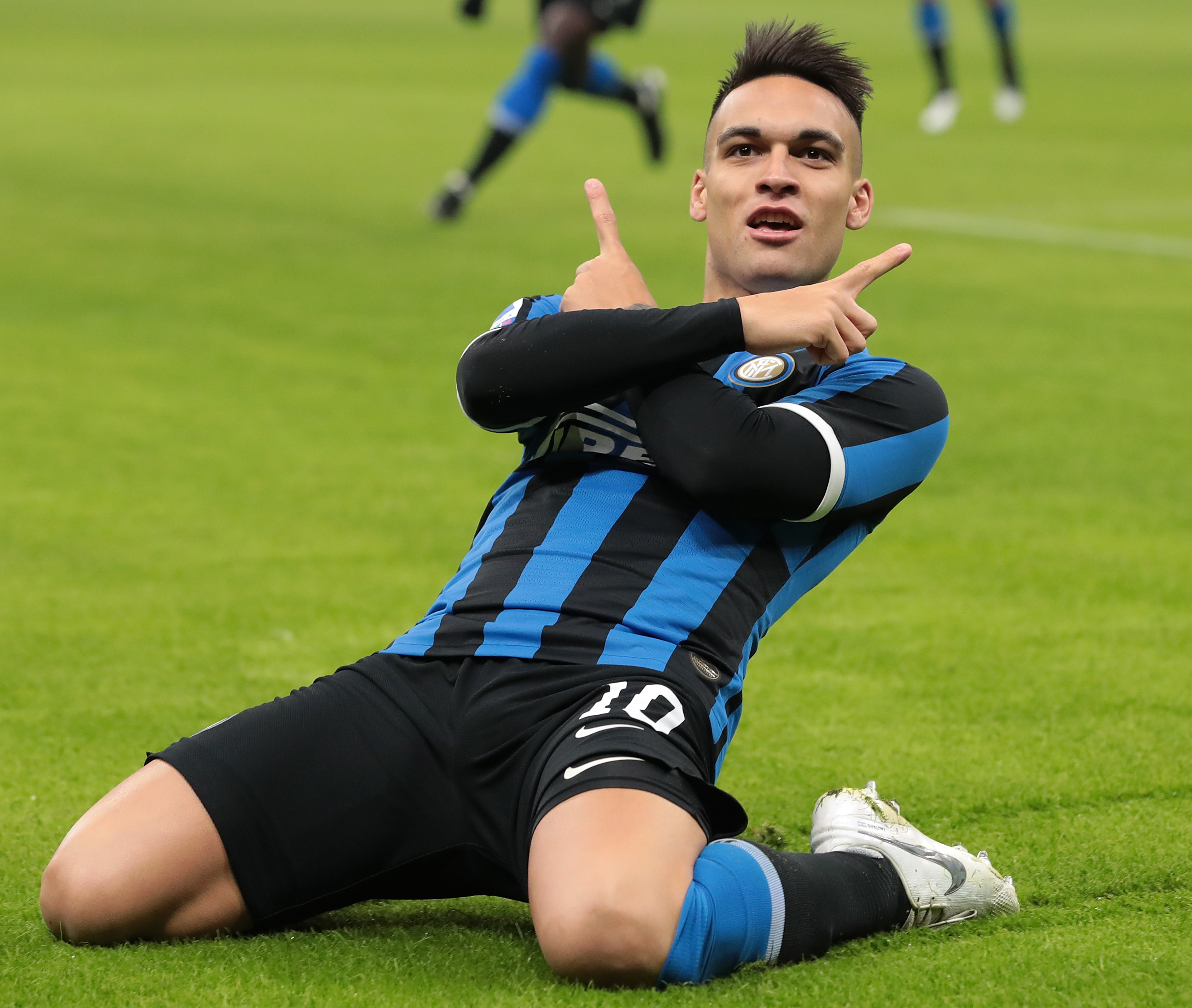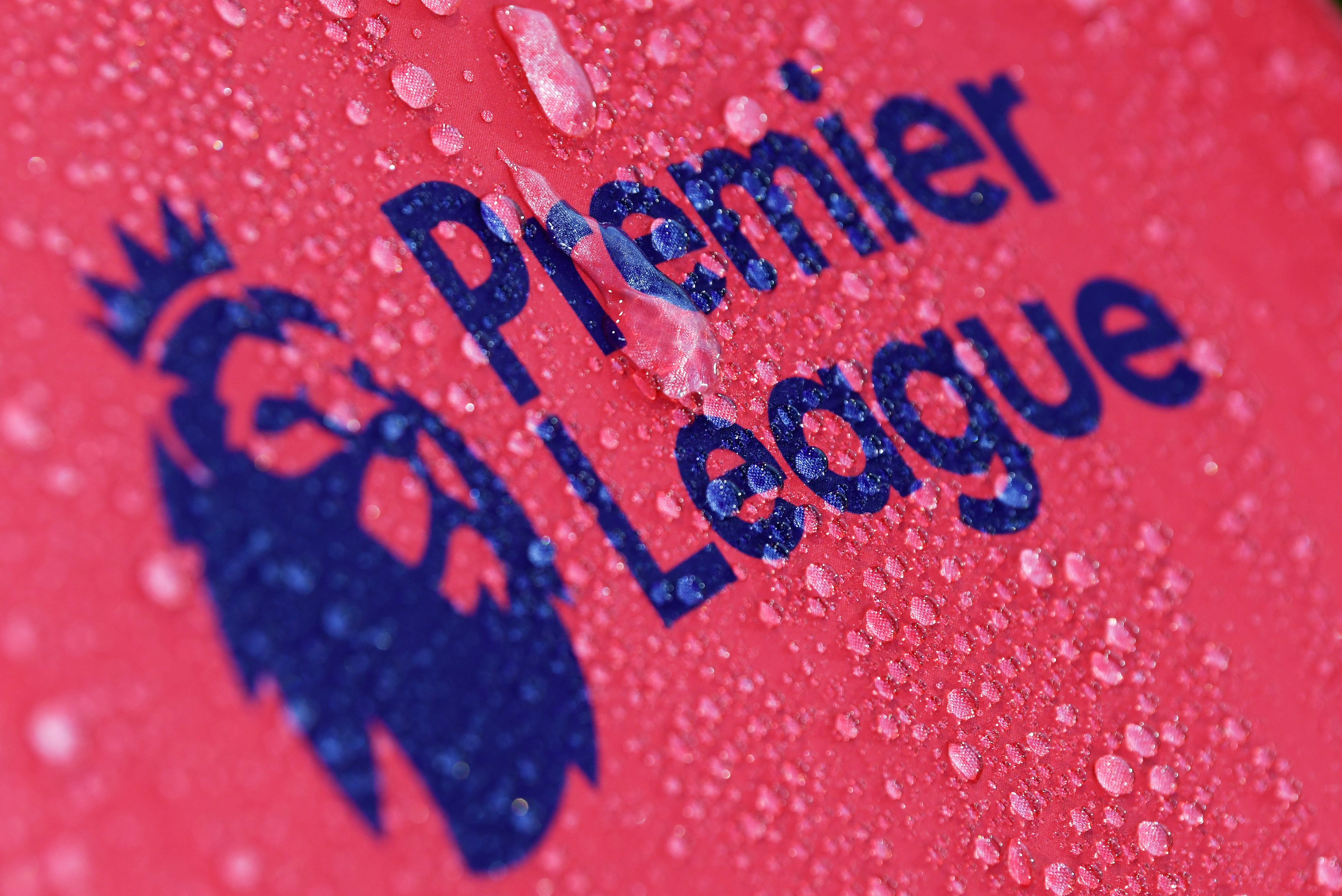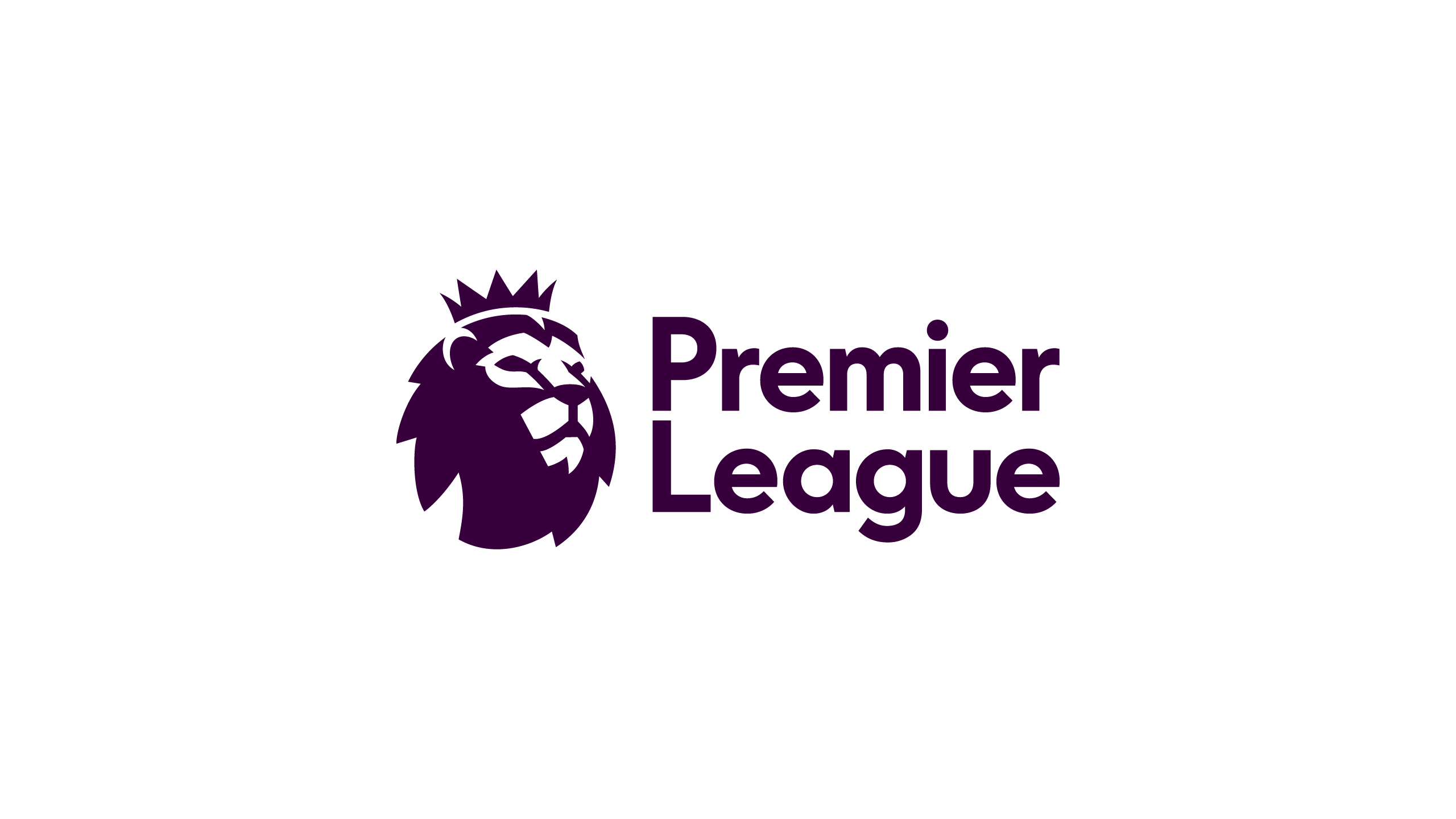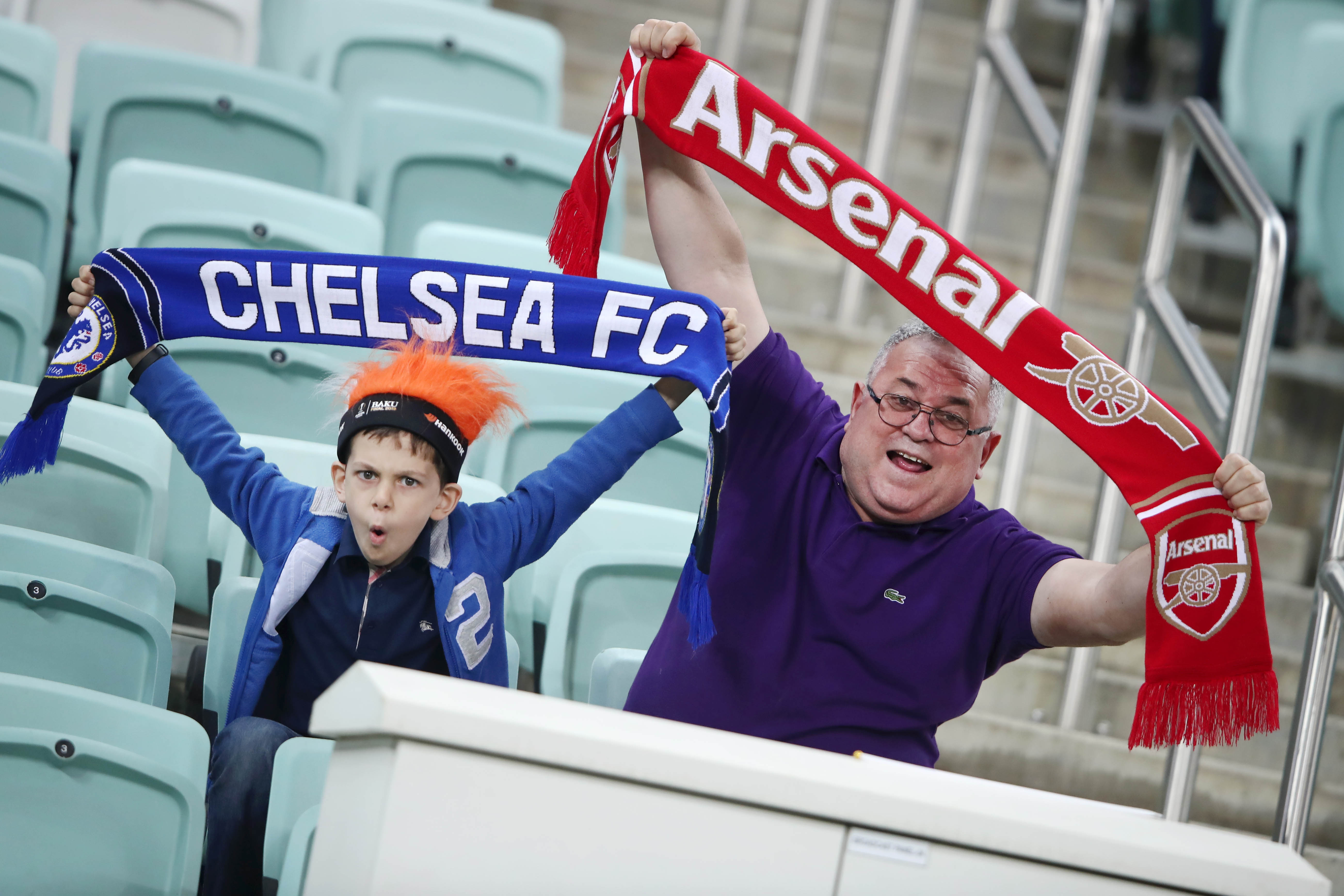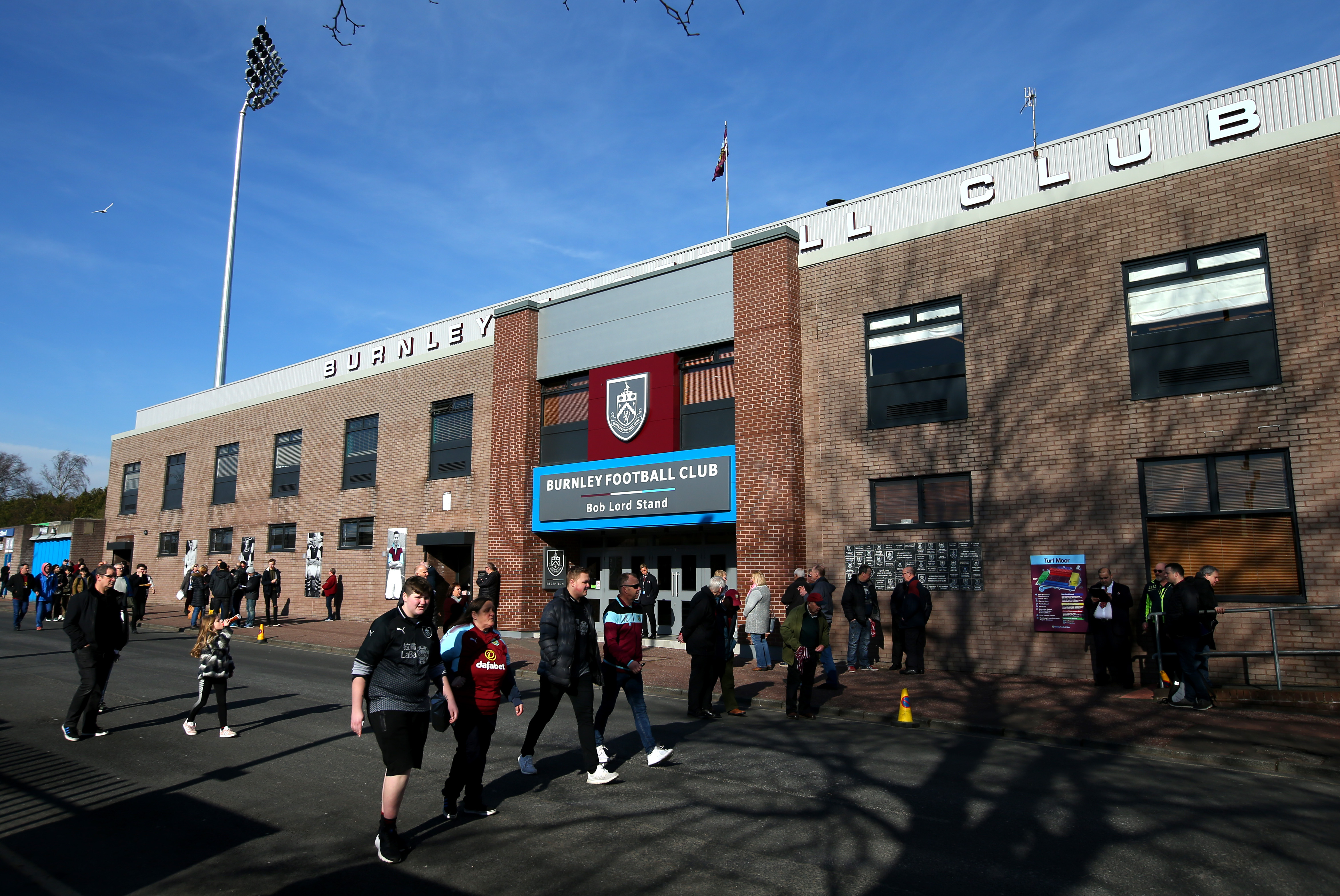The Hard Tackle takes a look at the multiple ways Barcelona will be able to set up after adding Lautaro Martinez to their arsenal.
As mid-June dawns upon us, and the world of football set to return, we are about to welcome the first summer transfer window of the new decade. However, things will be a bit different this time around, with every club taking a major financial hit due to the Coronavirus pandemic.
Transfers will resemble the pre Pogba-to-Manchester United era, with clubs trying to target players that will add depth to their team without costing a lot.
Not all teams, though. Not Real Madrid, not Manchester United, not Manchester City and certainly not Barcelona. Although, the Catalonia-based outfit should probably be the first to follow it. It’s not really a transfer window unless the Blaugrana announce at least one €100+ million signing, is it?
After selling Neymar Jr. for €222 million in 2017, Barcelona have added the likes of Ousmane Dembele, Philippe Coutinho and Antoine Griezmann to their offensive unit. Neither of them has exactly worked out so for them, though.
This season’s protagonist rumour makes a lot more sense, though as compared to, let’s say Neymar’s return. The Catalan giants have been extensively linked to Inter Milan’s Lautaro Martinez as a potential replacement for Luis Suarez who has entered the last juncture of his career and needs to be phased out. Suarez has enjoyed six seasons at the top level with Barcelona, and there might be no better replacement available than Lautaro whose style of play is very closely modelled on El Pistolero’s.
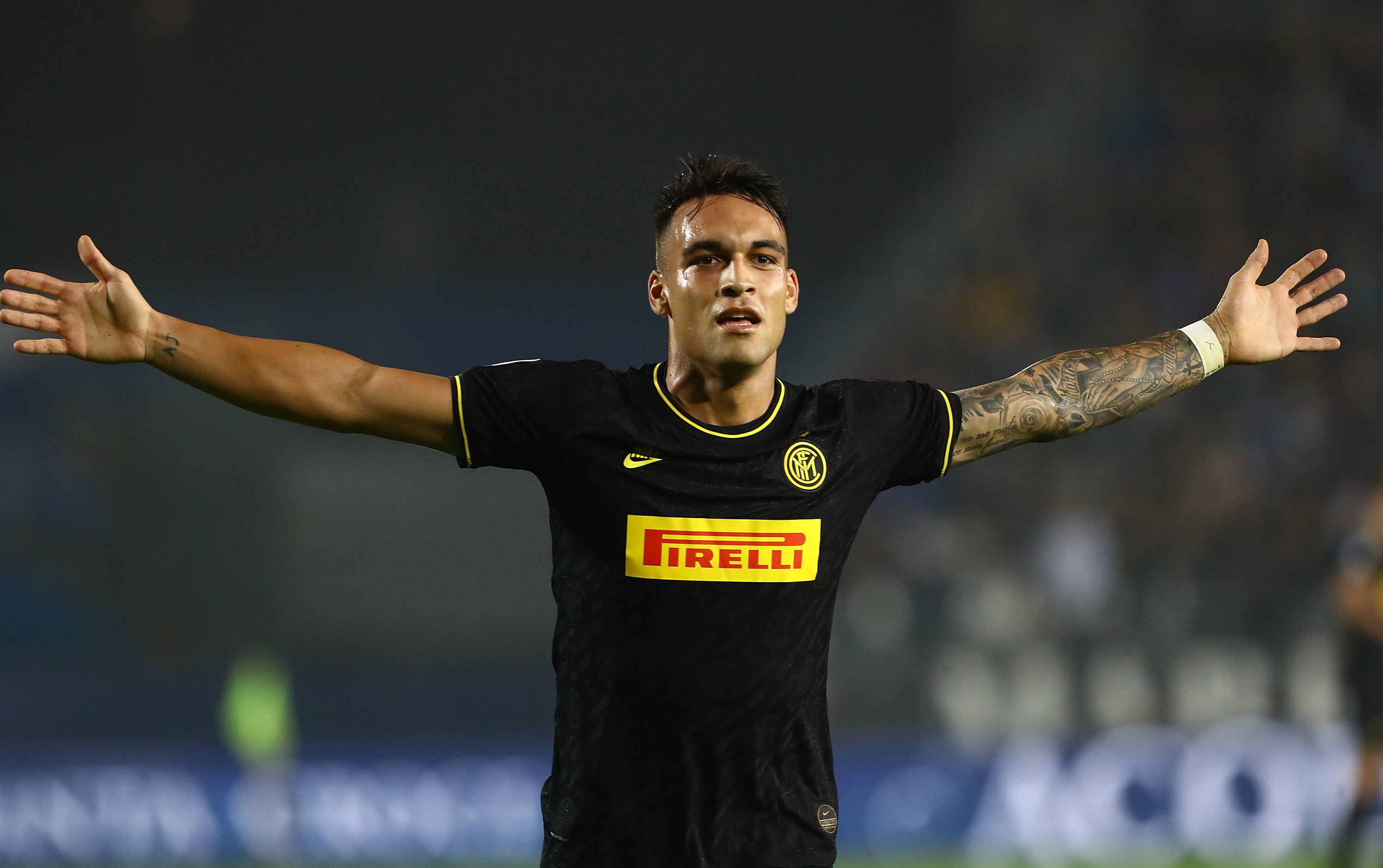
The principal question that comes up is, if the transfer goes through, how will Barca station the Argentine in an already star-studded lineup to get the most of him? The short answer: trust him to lead the attack over Suarez and let Lionel Messi pull the strings as he does.
The assumption here is that Quique Setien will continue with the 4-3-3 that Barcelona have constantly used for over a decade, with Griezmann and Messi occupying the flanks, but Lautaro in the middle. Frenkie de Jong would add vertical movement while Arthur Melo conducts play from deep.
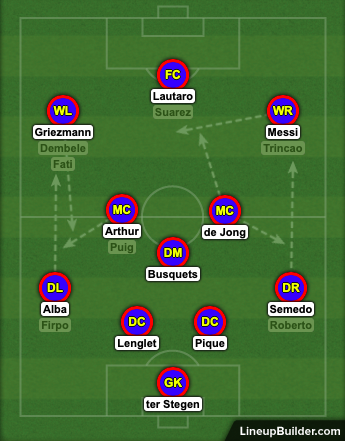
That said, there are numerous ways Barca can lineup after this transfer goes through. Arturo Vidal, Ivan Rakitic, and Carles Alena have all been touted with a move away from the Camp Nou as part of the club overhaul the board is planning, but Fabrizio Romano has reported that Barcelona reset to extend Riqui Pui’s contract till 2023, and has been included here over the three aforementioned names. As for Philippe Coutinho, nobody knows what the future holds for him, so he has been excluded here.
The Hard Tackle now takes a closer look at three of the numerous possibilities.
4-3-1-2: The “Let’s try playing Griezmann in his preferred position”
The 4-3-1-2 is essentially a 4-4-2 diamond, but with the number 10 acting as a separate entity in attack. This formation will feature Frenkie de Jong on the right side of central midfield, Sergio Busquets in the centre, and Arthur Melo on the left. Lionel Messi will be occupying the attacking midfield role ahead of these three behind the strike partnership of Antoine Griezmann and Lautaro Martinez.
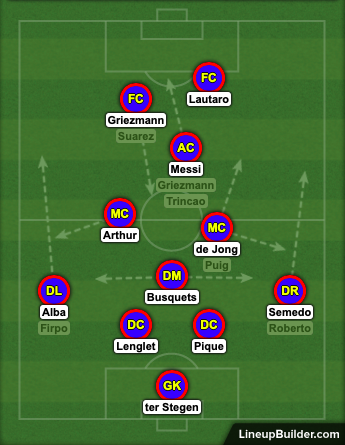
Lautaro will serve as the focal point of every attack, constantly making runs behind the defenders that will free up space for Messi and Griezmann that can be exploited with a defence-splitting pass. The Argentine striker can also rely on individual brilliance to carry the ball as he so often does with Inter Milan.
Despite his short frame, Lautaro boasts of tremendous physical strength which can and has been used to bully defenders. Case in point, Lautaro vs Samuel Umtiti at the San Siro.
The strike partnership will constantly look to pin down the opposition centre backs but only Griezmann will drop as deep as the fullbacks to defend, which is a common trait of his game. Lautaro has incredible stamina as well and will look to press the central midfielders to win a turnover, but will not drop as deep as Antoine. The best part about this set up is that the world cup winner can occupy the second-striker position, a role he made his own under Diego Simeone.
The width in this system will be provided by the fullbacks, two of Jordi Alba, Junior Firpo, Nelson Semedo and Sergi Roberto. The pairing will have to move up and down the channel at all times, joining the attack and then dropping back to defend. When not in possession, the midfield trio will cover for the fullbacks out wide to stop any counter-attack from the flank.
In attack, de Jong will push up without the ball to add an extra passing option. The Dutchman is an incredible passer but does not particularly gloat of creative solutions in the final third. He does, however, carry the ball brilliantly through the press while playing one-twos with teammates. He has done this all through the season, but we must not forget his best position is at defensive midfield, which he can occupy instead of Busquets while Riqui Puig plays as the natural number 8 adding lateral movement and creativity in the final third.
Finally, while the main area of attack will be through the centre, Lautaro and Griezmann can move to the right and left flank respectively to stretch the sortie as Messi drifts upwards as the false 9. While something like this is not a common trait of the 4-3-1-2, Barcelona can use it to add unpredictability to their attack.
4-2-3-1: The “At least we can outscore the opposition”
The 4-2-3-1 is probably one of the most popular, if not the most popular arrangement across the continent. The likes of Manchester United, Chelsea, Arsenal, Real Sociedad, Bayern Munich, Bayer Leverkusen, Borussia Monchengladbach among others use it constantly.
The idea is to have a double pivot in midfield, with one natural number 6 or just a midfielder who is good at defending partnered by a deep-lying-playmaker. Although teams have their own variations of it to suit their tactics. Case in point: Leon Goretzka and Joshua Kimmich at Bayern Munich.
For Barcelona, Frenkie de Jong and Arthur Melo will take up these roles. The latter boasts of amazing passing range and vision and can easily slot in as a regista, while the former occupies the more orthodox role of the defensive midfielder. However, both the midfielders have stellar passing and can use it to transition from defence to attack whenever the need arises.
4-2-3-1 can turn out to be a good option for Barcelona next season because they are planning a club overhaul where they might get rid of at least 2 midfielders, but more importantly, because with Ansu Fati in the mix, they will have nearly eight attackers on their payroll.
We might be getting ahead of ourselves here by counting on Ousmane Dembele to stay fit and because of that, we have to assume Francisco Trincao will assume responsibility on the right side with Lionel Messi and Antoine Griezmann occupying in the middle and left respectively.
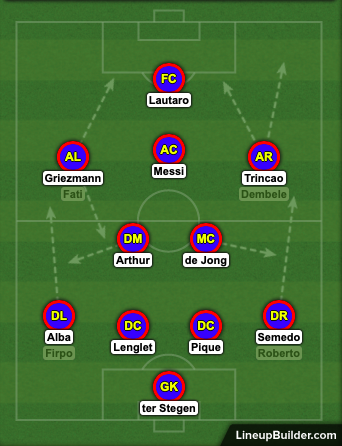
The double-pivot will drift wide to cover for the fullbacks who will move ahead to provide extra numbers in attack. It is unlikely any of the two central midfielders moves ahead in this scenario since there is already an absence of defenders.
Griezmann will fall back to the centre of the park to defend and will help in transition by carrying the ball out of pressure zones before joining the offensive move. As for Trincao, the Portuguese is a skilled dribbler, known for beating his marker with trickery and pace. He also has a slick cross in his arsenal which can be used by Lautaro Martinez who will lead the line.
The 22-year-old’s off the ball movement is widely regarded as one of the best in Italy which helps him get on the end of crosses without actually posing a physical threat, unlike his partner in crime Romelu Lukaku, whose immense build helps him outmuscle defenders and win headers with ease. You can see a glimpse of his brilliant off the ball running in this video. We recommend you do not turn on the sound, though.
Lautaro will also benefit a lot by playing off of his compatriot Messi, who can find a needle in a haystack with his vision. The two already have some sort of understanding on the pitch from their time with the national team, and we expect that it will help Martinez to gel with the rest of the team as well.
3-4-3: The “In case we are trailing by 3 goals from the first leg”
Barcelona have not used a 3-man defence since Luis Enrique experimented with it during his last season in charge in the 2016/17. The Spanish manager used a Johann-Cruyff-diamond by playing Lionel Messi as the number 10 deploying one of Rafinha Alcantara or Sergi Roberto on the right-wing to constantly swap places with the Argentine.
The idea with this lineup is a bit different, however. Instead of a four-man diamond, we have gone for an Antonio Conte style flat-four with two wingbacks and a double pivot. This works better than a diamond now because Barca do not boast of the best attacking trio in the world now, as they did with Messi, Luis Suarez and Neymar Jr. They cannot rely on outscoring opponents all the time and with an already frail defence, wingbacks would add a much-needed solidity at the back.
Ronald Araujo features in our version of this back-three instead of Samuel Umtiti, because, firstly the Frenchman is likely to be included in the numerous players that will be sold this summer. But more importantly, Gerard Pique might not have the legs to play on the right side of three anymore.
The Spaniard is already 33 and it might be better to play him as the sweeper in the heart of defence supplemented by the young Araujo on the right. Barca can also deploy Jean-Clair Todibo there in case he is not on his way out of Spain.
Francisco Trincao has been given the nod ahead of Antoine Griezmann because the latter is a left-footed left-winger who likes to stay wide and only moves to the centre when he inside the box. It might be a better idea to play Trincao here who can act as an inside forward and cut in from wide spaces. This also gives Jordi Alba the space he needs to connect with Lionel Messi who will play on the right-wing.
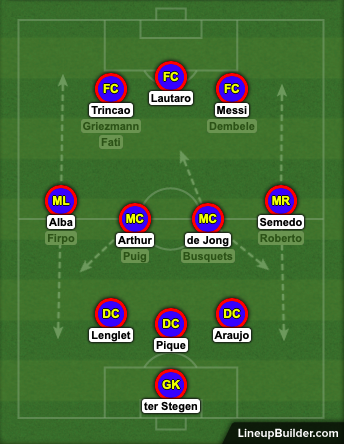
Because of a midfield overload, de Jong will get chances to leave his position to join the attack while Arthur covers for him in the centre. Although, in this formation, Quique Setien might want to consider playing Riqui Puig instead of Arthur who adds natural lateral movement and creativity in the final third.
The youngster has also showed signs of linking with Messi already and will also be a better fit in a 3-4-3 because of his mobility with and without the ball. That said, it is unlikely that Arthur is displaced from the starting spot.
